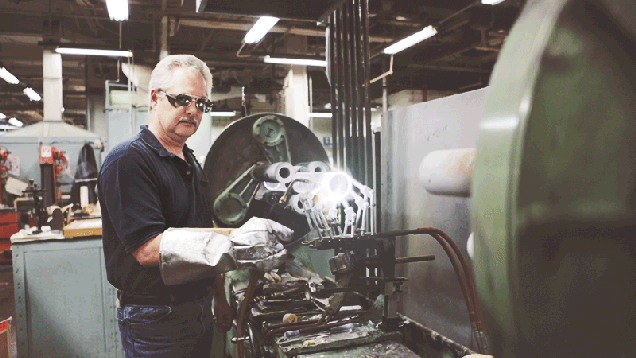I'm saddened to learn of layoffs at Amgen; I'm rather ironically amused to learn that cuts have a name from a comment by Chrispy at In The Pipeline (emphasis mine):
The current trend of gutting internal R&D with the hope in in-licensing Phase II molecules is not a model for long-term success. Without researchers you will not even understand what you are buying. But maybe it doesn't matter if you don't listen to them, anyway (e.g., Sirtris).
The nutty thing from the inside is that this particular layoff was branded "Amgen Full Potential" as if the laid-off folk were the problem. No, guys, less is less, and full potential moving forward is less than it could have been without this exercise.You know, great plans always have a name, kind of like "Adapting to Scale", "Let a Hundred Flowers Bloom" or "The Great Leap Forward". Good on you, Amgen bosses, for keeping the trend alive.
In all seriousness, something from that FierceBiotech story is bothersome to me (again, emphasis mine):
Amgen ($AMGN) reported Tuesday evening that it plans to ax up to 15% of the company's workforce, shutting down all of its facilities in Colorado and Washington state as it slashes up to 2,900 staffers.
Big research and manufacturing sites in Seattle and Bothell, WA, and Boulder and Longmont, CO, are all on the chopping block, including the sprawling 750,000-square-foot Helix research campus in Seattle with 610 staffers. And while it plans to keep its headquarters in Thousand Oaks, CA, the Big Biotech says it will consolidate a smaller headcount among fewer buildings, shrinking its corporate footprint.Derek Lowe notes that the Boston and San Francisco Amgen sites will actually add headcount.
Seems to me that many economic development commissions for larger municipalities will always tout the possibility of their area becoming its own biotech hub. When I hear those claims, I always think about the Seattle area, how it is so close to national status and seems to have never quite gotten there, thanks to blows like this one. And then I ask, local government people, what are you going to do that Seattle hasn't?








